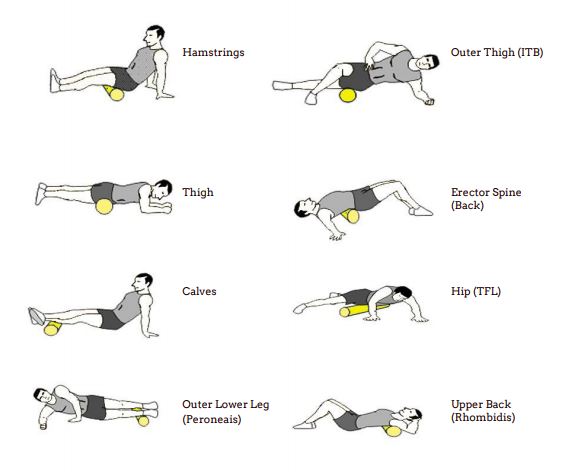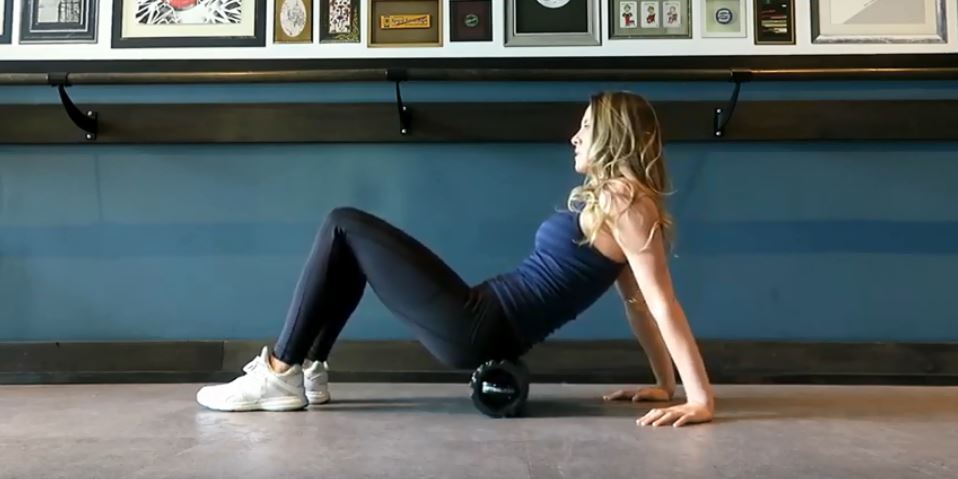A foam roller should be an integral part of every athlete’s daily routine. Regular use of the roller can be beneficial for preventing injuries, enhancing performance, and speeding up recovery (whether injured or not). Foam rolling is a great way to warm up cold muscles for deep, specific stretching, as well to warm up muscles before any athletic activity. The roller is also an effective way to loosen up muscles, such as the IT Band and shin muscles, that may be difficult to access with conventional stretching, as well as focusing on tight knots or bands within a muscle. The reason a foam roller is able to aide in so many ways is that it is an effective tool in the myofascial release process. Additionally, a foam roller can help serve as an early indicator to when muscles are beginning to tighten up even though you may not feel any tightness while performing an activity. To get the most effective results, use the roller prior to stretching. We have included a list of areas that may benefit from the use of a foam roller, as well as effective positions for accessing these areas.
How to Use a Foam Roller
When foam rolling, always stay on the muscle tissue and do not roll on tendons, joints, or bony structures. Rolling on areas other than muscle tissue could result in injury as you would be applying pressure to areas that are already under natural stresses of the body. Additionally, do not roll over areas that are too painful or that don’t roll smoothly. Any areas that are too painful to foam roll could indicate a more serious issue, such as an injury. When targeting specific, tight areas, it is more effective to start by placing the roller on the sensitive or knotted spot and gradually increasing pressure manually. Remain on the tight spot until the muscle releases but don’t roll in any one spot for longer than one minute. Always roll before stretching.
Areas to Consider Foam Rolling:
- Hamstrings
- IT Bands
- Thighs
- Upper-Back
- Lower-Back
- Calves
- Hips
- Shins
See below a diagram of how to best approach foam rolling each of the areas listed above.

4 Foam Roller Mistakes to Avoid
- Avoid rolling directly on your lower vertebrae
- Do no hold your breath
- Don’t roll evenly on each side – roll where it hurts
- Avoid rolling too quickly – slow and steady wins the race!
How Often Should You Use a Foam Roller?
Ideally, every day. Consider it a part of your stretching and training routine. The more often you foam roll, the more likely your muscles are to respond to it. If it is uncomfortable at first, ease yourself into it by building up the frequency that you roll out.
Most therapists will recommend 10 to 20 minutes of foam rolling per session at least once a day. As you roll, use short, slow rolls on areas of tension followed by longer, slower roles over the length of the muscle.
If you’re suffering from a serious injury or chronic condition like diabetes it is recommend that you consult a doctor before foam rolling. If you being foam rolling and are experiencing extreme discomfort and pain, stop immediately.
Read More on Foam Rollers and Myofascial Release


